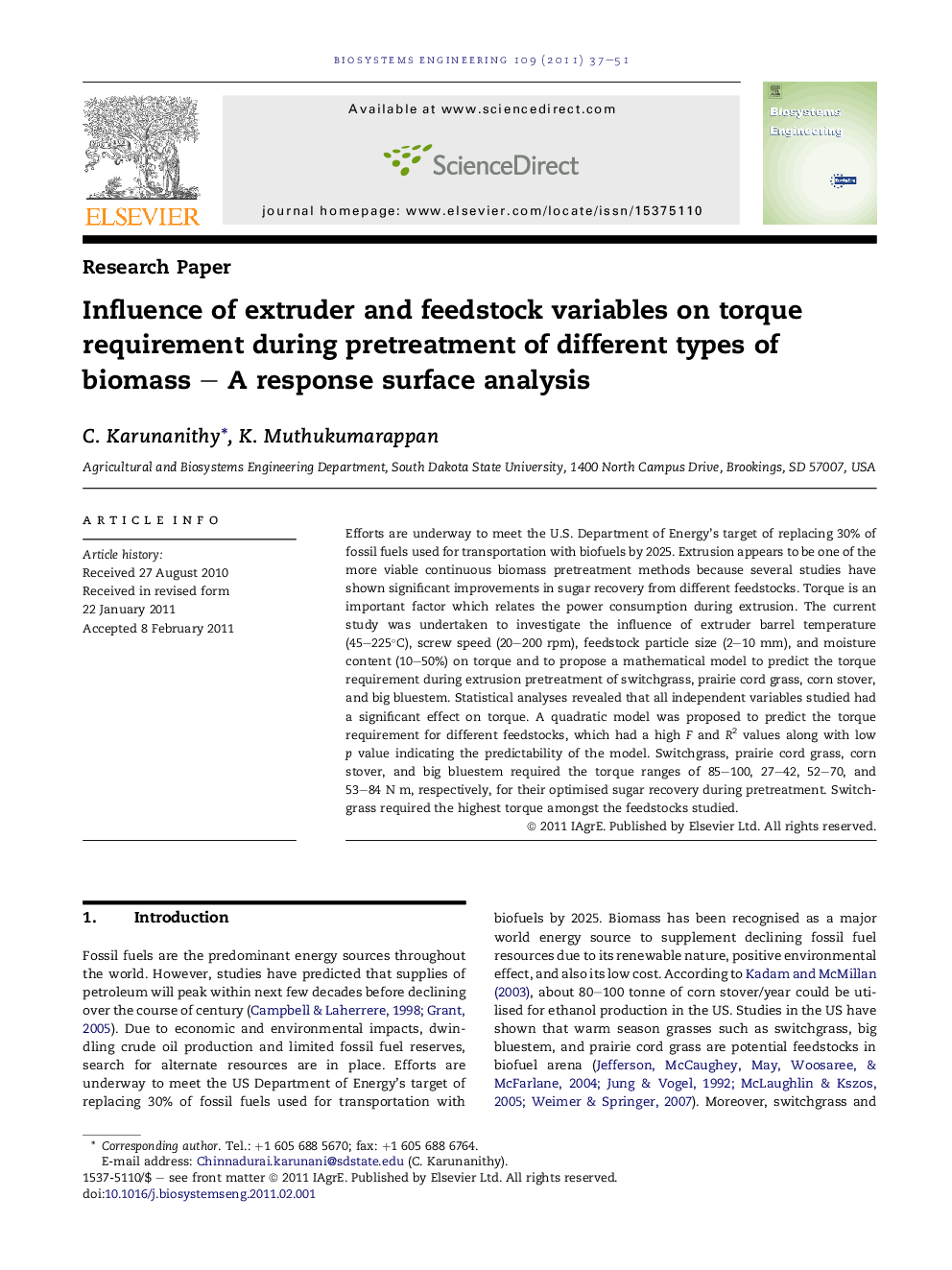| Article ID | Journal | Published Year | Pages | File Type |
|---|---|---|---|---|
| 1711806 | Biosystems Engineering | 2011 | 15 Pages |
Efforts are underway to meet the U.S. Department of Energy’s target of replacing 30% of fossil fuels used for transportation with biofuels by 2025. Extrusion appears to be one of the more viable continuous biomass pretreatment methods because several studies have shown significant improvements in sugar recovery from different feedstocks. Torque is an important factor which relates the power consumption during extrusion. The current study was undertaken to investigate the influence of extruder barrel temperature (45–225°C), screw speed (20–200 rpm), feedstock particle size (2–10 mm), and moisture content (10–50%) on torque and to propose a mathematical model to predict the torque requirement during extrusion pretreatment of switchgrass, prairie cord grass, corn stover, and big bluestem. Statistical analyses revealed that all independent variables studied had a significant effect on torque. A quadratic model was proposed to predict the torque requirement for different feedstocks, which had a high F and R2 values along with low p value indicating the predictability of the model. Switchgrass, prairie cord grass, corn stover, and big bluestem required the torque ranges of 85–100, 27–42, 52–70, and 53–84 N m, respectively, for their optimised sugar recovery during pretreatment. Switchgrass required the highest torque amongst the feedstocks studied.
► Torque should be optimised for extrusion parameters while pretreating biomass. ► Barrel temp., screw speed, moisture content and particle size significantly affected torque. ► Quadratic model predict torque requirements well. ► Switchgrass and prairie cord grass, require 85–100 and 27–42 N m. ► Corn stover, and big bluestem require 52–70 and 53–84 N m.
